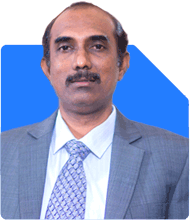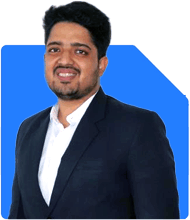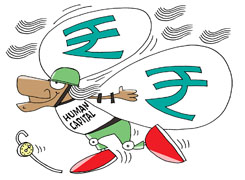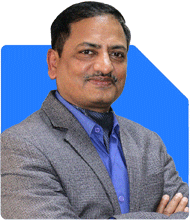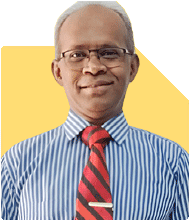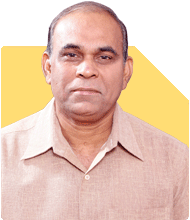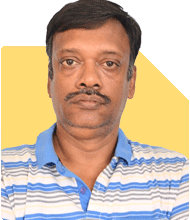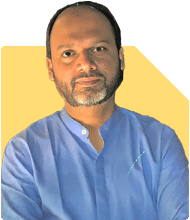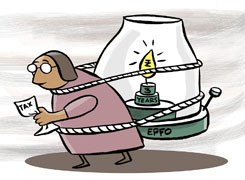
I am a West Bengal State Government Employee due for retirement in August 2026.
I am a divorcee who lives with an Adult Son who is not financially dependent on me in a self purchased house(Cash) and also own a flat (Cash)
By the time of retirement
I will have 73 lacs in GPF, 31 lacs in PPF, 20 lacs in Gratuity, 11.65 lacs in Leave encashment, 20 lacs from Pension Commutation and 6.5 lacs as maturity proceeds from Cooperative Thrift Fund.
Since I will draw around 38000 OPS Pension with DA thereafter per month.
Will it be beneficial to invest 30 lacs in SCSS, 18 lacs in MIS and 20 Lacs in FRSBs for a cumulative monthly interest of 45000 rupees.
My monthly income will be 83000 then.
I plan to actively continue subscription to my PPF post retirement and need advice on what to do with the remaining 63 lacs of my corpus???
My son advises me in investing in Kisan Vikas Patras and 5 Year PO Time Deposits as these are largely liquid.
PS- I have two health insurances, one the West Bengal Health Scheme Cashless and the National Insurance Mediclaim Policy for son and me with 17 lacs sum assured.
Ans: Based on your profile as a West Bengal Government Employee retiring in August 2026, and the impressive financial preparedness you've shown, here is a detailed, 360-degree analysis of your financial situation and investment choices, written in a simple and structured format.
Let’s go step by step to help you get better clarity.
? Current Financial Picture and Retirement Readiness
– You are already well-prepared for retirement. That deserves appreciation.
– You own your house. That removes rental liabilities.
– You also have another flat, fully paid for. This adds to your asset base.
– Your son is not dependent. That reduces your future financial obligations.
– You are sitting on a strong retirement corpus of Rs. 1.62 crores.
– Your post-retirement monthly pension is expected to be Rs. 38,000 with DA.
– Proposed income from safe investment options is Rs. 45,000 per month.
– That means, total monthly income will be Rs. 83,000, which is quite healthy.
– Your current and expected lifestyle appears manageable within this budget.
– You have two health covers. That gives enough financial protection from medical emergencies.
You have set a very solid financial foundation. Now, it’s time to structure the investment allocation with care.
? Evaluating the Proposed Investment Mix
You are considering the below investment plan:
– Rs. 30 lakhs in a senior citizen savings option
– Rs. 18 lakhs in monthly interest yielding postal scheme
– Rs. 20 lakhs in government floating rate savings bonds
These offer monthly interest income around Rs. 45,000.
This plan shows great prudence and awareness. But, it’s not complete.
It ensures safety and regular cashflow. But it lacks future growth.
Your pension and these options will help for regular needs.
But what about inflation 10–15 years down the line?
That’s where your portfolio must include growth assets.
? Safe Income Assets Are Essential – But Not Sufficient
– Senior savings and monthly income options offer steady interest.
– Floating rate bonds protect somewhat against rising interest rates.
– These are great for predictable monthly inflow.
But there is one issue here:
– Interest income is taxable every year.
– Real return post tax and inflation may drop below 2% in future.
– They help with stability. But they don’t create wealth.
So, this plan is strong for the short-term.
But to stay financially secure for the next 20–25 years,
you need to add some long-term growth elements.
? Liquid and Flexible Options Your Son Suggested
You mentioned your son recommended:
– Kisan Vikas Patras
– 5-Year Post Office Term Deposits
These have some benefits:
– Safe and guaranteed returns
– Slightly more liquid than other long-term fixed income options
– No market-linked risk
But there are drawbacks too:
– Both are taxable every year
– Returns may not beat inflation in long run
– Fixed interest means less flexibility during rate changes
So, while your son’s suggestion comes from care,
these products should only take a partial share of your corpus.
You can allocate around Rs. 10–15 lakhs here, not more.
? The Remaining Rs. 63 Lakhs – What to Do?
You are asking how to deploy the remaining Rs. 63 lakhs.
The answer depends on three important things:
– Do you have future large expenses planned?
– Are you willing to keep some money locked for 5 years+?
– Do you want your total income to grow every year?
Let us approach this wisely.
Break your Rs. 63 lakhs into 3 buckets:
1. Emergency & Short-term Reserve – Rs. 8 to 10 lakhs
– Keep this in a liquid mutual fund with low risk
– You can withdraw anytime within 24 hours
– Helps during medical needs or family emergencies
– This avoids breaking FDs or other long-term products
2. Medium-term Stability – Rs. 18 to 20 lakhs
– You can consider short duration mutual funds
– These are ideal for 3–5 year horizon
– They offer better post-tax returns than bank FDs
– Risk is moderate and suited for your age
You can invest in regular plans through a Mutual Fund Distributor with CFP qualification.
Avoid direct plans. These lack advice and long-term discipline.
Also, you may miss key portfolio reviews without a professional’s help.
Regular plans include embedded costs, but the value of guidance is much higher.
3. Long-term Growth – Rs. 33 to 35 lakhs
This is very important. Don’t ignore this section.
You will need to beat inflation for next 20 years.
This requires growth-oriented mutual funds.
– Choose hybrid mutual funds or balanced advantage mutual funds
– These reduce market risk by shifting between equity and debt
– Returns are better than fixed income in the long run
– You can withdraw anytime after one year with lower tax impact
You may go for monthly withdrawal plans if needed after 5 years.
Also, you can stay invested and let the funds grow with compounding.
Never invest in index funds.
They only track the market.
They don’t protect downside or volatility.
Also, they do not give alpha returns over time.
Actively managed funds do better in India.
Because fund managers can change portfolio during economic shifts.
Also, do not invest directly.
You will miss portfolio balancing, risk reviews, and exit timing.
Use a regular plan through a Mutual Fund Distributor with CFP credential.
? You Can Continue PPF Contributions Post Retirement
This is a good strategy. PPF gives tax-free interest.
Continue depositing Rs. 1.5 lakh per year.
You already have Rs. 31 lakhs in PPF.
This will become a strong tax-free legacy for your son.
You can extend the account in 5-year blocks after retirement.
This keeps money safe and growing slowly.
? Pension and Inflation Consideration
You will get Rs. 38,000 per month from OPS.
With current DA trends, this may increase slowly.
But inflation may outpace pension growth in 10–15 years.
So, income from investments must increase over time.
That’s why long-term mutual fund allocation is very important.
? No Need to Look at Annuities or Real Estate
Avoid locking large amounts in annuity plans.
They give low returns and no flexibility.
Also, do not buy more property now.
You already have two houses.
Real estate has low liquidity and high maintenance post-retirement.
? No Mention of LIC, ULIPs, or Endowment Policies
You haven’t mentioned having LIC policies or ULIPs.
If you do, check their surrender value.
Mostly, these give poor returns after adjusting for inflation.
You can surrender and reinvest the maturity value in mutual funds.
Only do this if lock-in period is over and charges are low.
? Final Insights
– You are financially well-prepared for retirement.
– Continue the plan of earning Rs. 45,000 monthly through fixed safe instruments.
– But allocate Rs. 30–35 lakhs to long-term mutual funds.
– This will grow your money for next 20 years.
– Have Rs. 8–10 lakhs in liquid funds for emergencies.
– Use regular mutual fund plans through an experienced CFP-led Mutual Fund Distributor.
– Avoid direct, annuity, and index-based options.
– Keep contributing to PPF and track expenses carefully post-retirement.
– With this balanced approach, you can enjoy peace and security.
Best Regards,
K. Ramalingam, MBA, CFP,
Chief Financial Planner,
www.holisticinvestment.in
https://www.youtube.com/@HolisticInvestment






